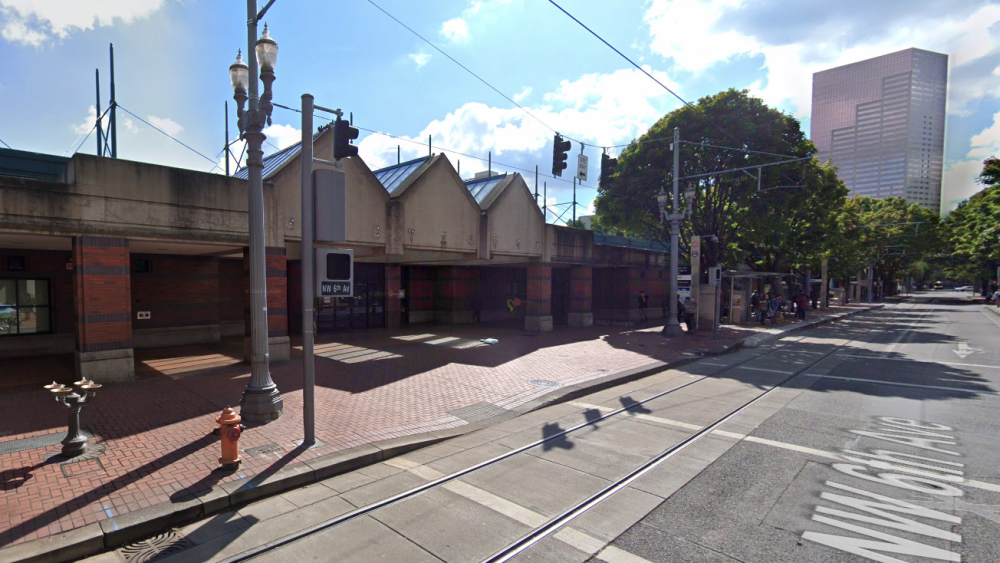Recently, we asked you which vacant office spaces around town you’d recommend be converted to affordable housing. You know — the empty buildings you pass every day on your morning commute and think “that would make a great blank.” As usual, you did not disappoint. Here are four spots you thought could make hot homes.
The hot spots
3300 NE Broadway, submitted anonymously
This 29,000-sqft building was originally built in 1918 as a factory for airplane wings during WWI. It was home to Gordon’s Fireplace Shop for 61 years before it closed in 2016.
426 SW Harvey Milk St., submitted anonymously
The 107,600-sqft J.K. Gill Building formerly served as Multnomah County’s Health Department headquarters. It was renovated in 2020 but maintains some of its original exterior detailing from 1923.

The former Greyhound bus station has one of Portland’s iconic four-bowl Benson Bubblers.
Photo via Google Street View
550 NW Sixth Ave., submitted by Larry W.
Greyhound shut down this bus station in Old Town Chinatown in 2019, and the city of Portland has periodically used it as a seasonal shelter for houseless residents.
400 SW Sixth Ave., submitted by Daniel W.
The 11-story office building and one-time home of Camera World underwent extensive renovations in 2019, including an updated exercise facility, but the COVID-19 pandemic upended developers’ aspirations and it was sold a couple of years later.
The big picture
In case you missed it, the White House recently released a new plan to convert vacant commercial buildings into residential housing through resources like:
- Grants: Funding from the government can help cover the costs of land acquisition and construction. For example, the Community Development Block Grant Program provides annual grants to fund housing projects.
- Land dispositions: Transferring property to local governments, non-profits, and for-profit developers can reduce the cost of affordable housing.
- Taxes: When transforming office space into housing, systems like plumbing, heating, and cooling typically need replacing. This can be an opportunity to make improvements to energy efficiency — which can be rewarded with tax incentives and credits.
There are more resources than we could possibly list — 20+ programs across multiple agencies. Good thing all the current federal resources are consolidated into this guidebook.





